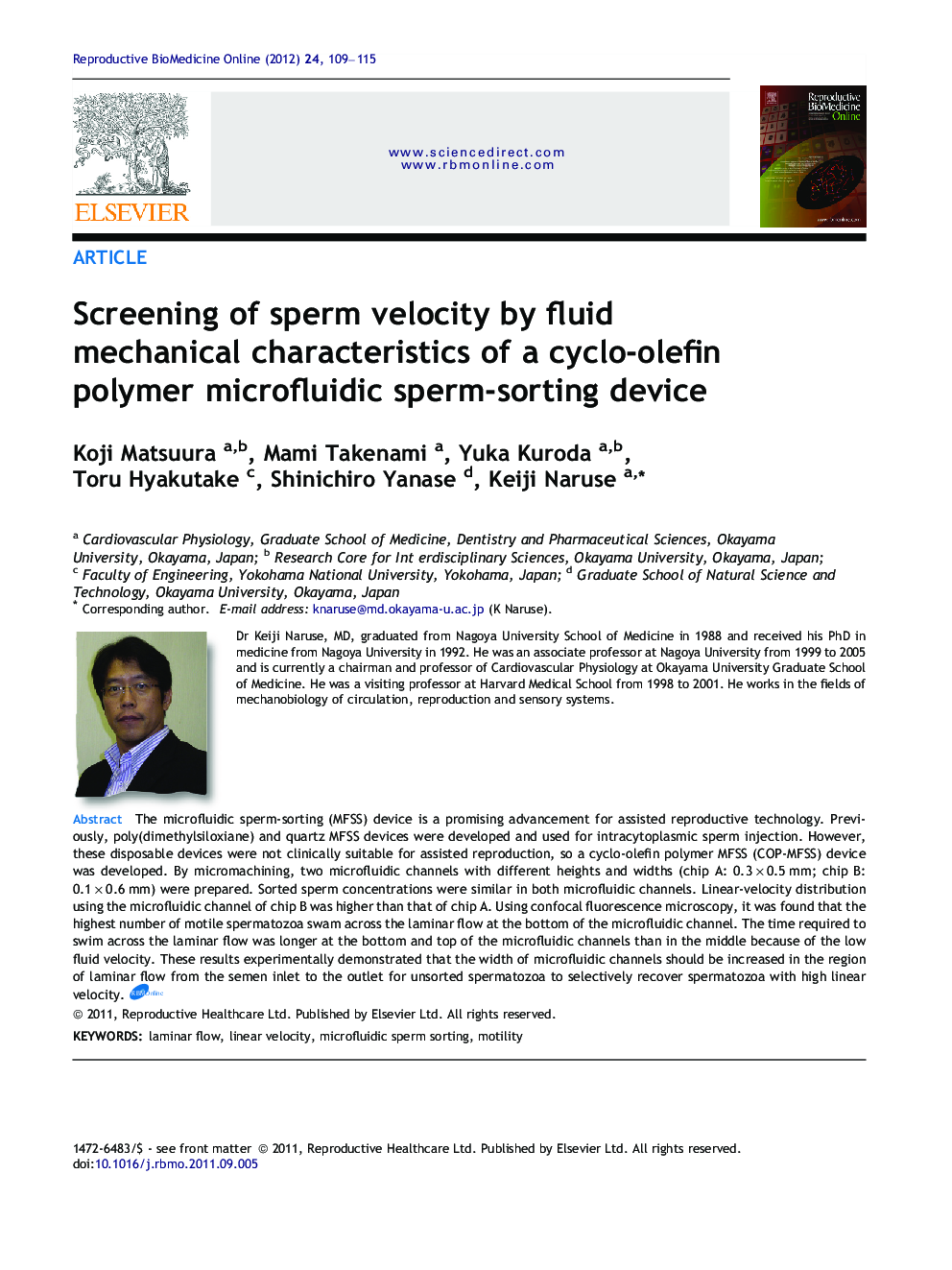| Article ID | Journal | Published Year | Pages | File Type |
|---|---|---|---|---|
| 3970629 | Reproductive BioMedicine Online | 2012 | 7 Pages |
The microfluidic sperm-sorting (MFSS) device is a promising advancement for assisted reproductive technology. Previously, poly(dimethylsiloxiane) and quartz MFSS devices were developed and used for intracytoplasmic sperm injection. However, these disposable devices were not clinically suitable for assisted reproduction, so a cyclo-olefin polymer MFSS (COP-MFSS) device was developed. By micromachining, two microfluidic channels with different heights and widths (chip A: 0.3 × 0.5 mm; chip B: 0.1 × 0.6 mm) were prepared. Sorted sperm concentrations were similar in both microfluidic channels. Linear-velocity distribution using the microfluidic channel of chip B was higher than that of chip A. Using confocal fluorescence microscopy, it was found that the highest number of motile spermatozoa swam across the laminar flow at the bottom of the microfluidic channel. The time required to swim across the laminar flow was longer at the bottom and top of the microfluidic channels than in the middle because of the low fluid velocity. These results experimentally demonstrated that the width of microfluidic channels should be increased in the region of laminar flow from the semen inlet to the outlet for unsorted spermatozoa to selectively recover spermatozoa with high linear velocity.Microfluidic sperm sorting (MFSS) is a promising advance for assisted reproductive technology. Previously, poly(dimethylsiloxiane) and quartz MFSS devices were developed and used for intracytoplasmic sperm injection; however, these devices are neither disposable nor clinically suitable for assisted reproduction, so we developed a cyclo-olefin polymer (COP)-MFSS device. By micromachining, we prepared two microfluidic channels with different heights and widths (chip A: 0.3 × 0.5 mm; chip B: 0.1 × 0.6 mm), and subsequently used these channels to investigate the sperm linear velocity distribution and the sorted motile sperm concentration. The sorted sperm concentrations were similar in both microfluidic channels. The linear velocity distribution using the microfluidic channel of chip B was higher than that of chip A. To investigate the activity of sorted motile spermatozoa at different heights of the microfluidic channel (top, middle and bottom), we performed confocal fluorescence microscopy and found that the highest number of motile spermatozoa swam across the laminar flow at the bottom of the microfluidic channel. The time required to swim across the laminar flow was longer at the bottom and top of the microfluidic channels than at the middle of the channels because of the low fluid velocity. We experimentally demonstrated that the width, and not the height, of microfluidic channels should be increased in the region of laminar flow from the semen inlet to the outlet for unsorted spermatozoa to selectively recover spermatozoa with high linear velocity.
